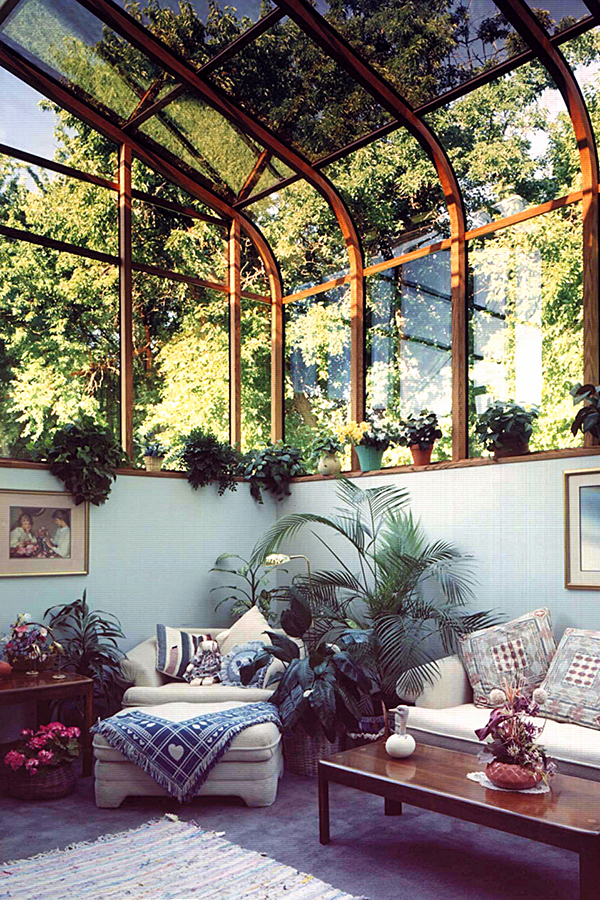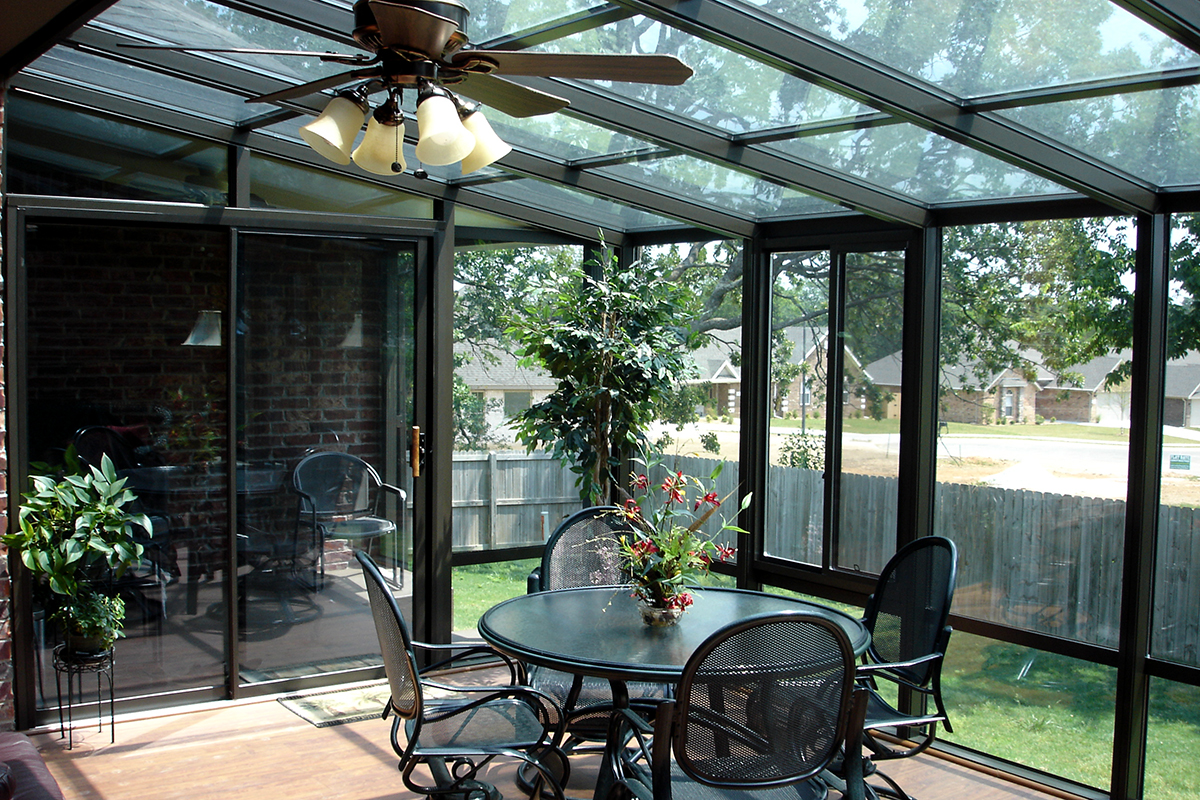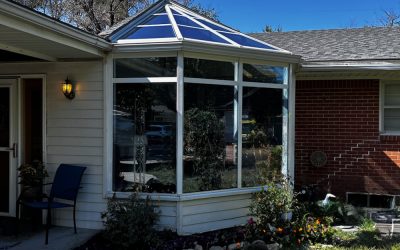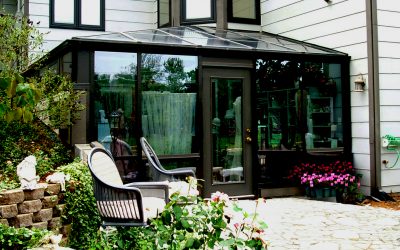
Sunlight is essential to our well being so no matter which style you prefer, you'll get any hours of enjoyment by spending time in your new structure.
Sunrooms, solariums & greenhouses – what’s the difference?

When you are thinking of a sunny addition to your home, you might hear different terms tossed around. Our rooms are known by many names: sunrooms, patio rooms, patio enclosures, Florida rooms, Arizona rooms, cathedral rooms, winter garden rooms, greenhouses, conservatories, and more.
How do you know which is what? And which one is right for your setup?
This is a short article to explain the differences so you’ll know exactly which term is correct for the room of your dreams.
Conservatory
Starting alphabetically, a conservatory is a room with a glass roof and walls, attached to a house on one side. It can be used as a greenhouse or a sun parlor. A conservatory is different than a solarium because it has accessories like ridge crests, finials, decorative gutters, decorative rakes, glass spacers, or crown molding. Think of this as the addition of a full room with glass all around, a great space for relaxing, dining, or entertaining. Note that the walls AND roof are glass. Many customers will install automatic sunshades that help control the comfort and light levels inside the conservatory.
Solarium
A solarium is a glass-enclosed patio or porch. The all-glass structure is often built onto an existing home to make use of the sunlight and give the feeling of being close to nature. Solariums can be slightly different shapes based on the style of glass used (curved or straight). Most of the time a solarium will have a curved eave as shown in the photo on the right. They usually have some window openings and tracks that accommodate shades to insulate against the variation in temperatures. It is a room that can be used in all four seasons.
Sunroom
A sunroom is a “sunny room” just as the word implies. While some will define a sunroom as an all-glass structure, it’s really an enclosed patio that makes use of many windows but is not completely made of glass. The windows are usually side by side across all the walls and do not stretch floor to ceiling. The sunroom has a traditional roof like the primary structure. Sunrooms, like solariums, allow people to enjoy the surrounding landscape while being sheltered from the weather however, sunrooms may only be comfortable for three out of four seasons depending on insulation and heating abilities.
Orangery
An Orangery (or Orangerie) is a fancy name for a special, large greenhouse that can accommodate orange (and other) fruit trees. Orangeries were in fashion during the 17th thru 19th centuries to protect fruit trees during the winter. Often a stove was used in the orangery to keep the plants warm. More than a greenhouse, an orangery was a sign of wealth and prestige. Orangeries would often contain fountains and grottoes as well as an area to entertain during bad weather. Today orangeries can still be found and occasionally someone will refer to an unusually large greenhouse as an orangery.
Greenhouse
A greenhouse is a structure with walls and roofs made chiefly of transparent material, normally not attached to any other buildings. When most consumers think of a greenhouse, they think of a nice plant room. A place where they can enjoy a bit of gardening in bad weather. But greenhouses have 3 main types:
-
- Production greenhouses:
Made for aggressively planting, growing, and harvesting year-round. These types of greenhouses can be made of almost anything from plastic sheeting to translucent panels. Because they are dedicated to the life cycle and crops produced, these are not comfortable as a living area but do function well in providing a place to garden year-round. If the greenhouse is heated it may be referred to as a “hot house.” High-tech greenhouses may be built to include screening, heating, cooling, and lighting, and may be controlled by a computer to optimize conditions for plant growth.
- Production greenhouses:
-
- Home greenhouses: Most of the time greenhouses have glass construction. Many avid gardeners will have greenhouses to allow plants to thrive year-round along with providing space for relaxation or reading. These are comfortable spaces for plants and people.
- Classroom greenhouses: These are a combination of production greenhouses and home greenhouses. They are comfortable for plants and people, yet provide many of the features of a production greenhouse. In addition, the classroom greenhouse meets the same building codes required for the main structure (usually a school of some type) and exceeds the building codes for other types of greenhouses. Because the protection of the students is of utmost concern, the classroom greenhouse is built to withstand snow loads and high winds.
Like being outside in any weather
It’s like being outside on a nice day even when the weather isn’t all that nice . . . We are glad we had this installation. The product fits our needs.

Related Articles
Related
Built to Last for Generations: How Modern Solariums Stand the Test of Time
Just how long will a solarium or greenhouse last?Unlike flimsy options built even a decade ago, today's tempered glass, UV-filtering improvements, and powder-coated architectural aluminum can extend the lifespan of your solarium dramatically with proper care. A few...
The Complete Guide to Permitting Your Sunroom or Solarium Addition
Planning a Sunroom Addition? The Permits Are Up to You!So you've decided to add a solarium or sunroom to your home. Exciting! These spaces filled with natural light are wonderful for relaxation and entertaining. But before calling a contractor, know that as the...
Sunroom, Solarium and Greenhouse Insurance Claims – What Homeowners Need to Know
Adding a sunroom, solarium or greenhouse to your home can provide extra living space and a connection to the outdoors. However, these specialty additions come with unique risks that standard homeowners insurance may not fully cover. As a homeowner, it's important to...
Follow Us
Join
Subscribe to our Sunny News
Monthly news for sunny living.




